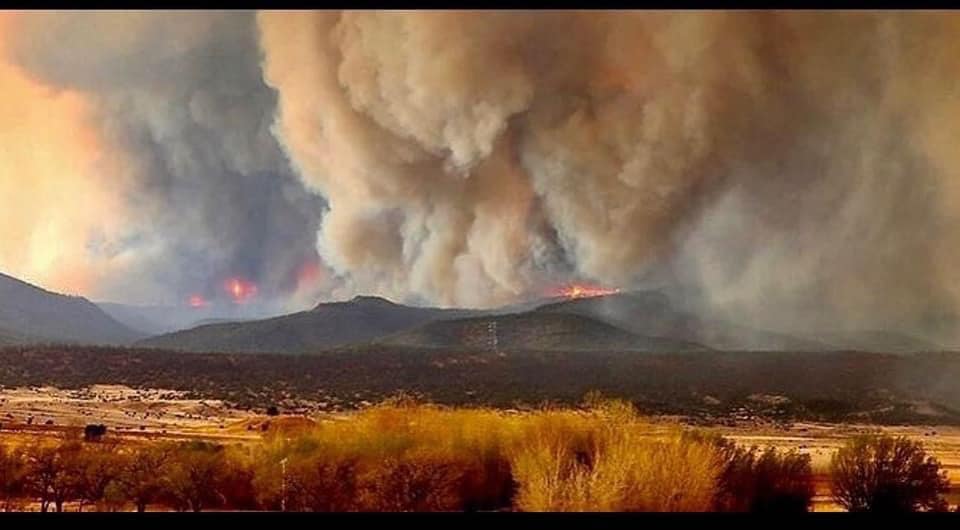By Glynn Wilson –
As carbon emissions rise and the planet continues its warming trend, climate change and energy are increasingly on the public’s mind, according to public opinion surveys from Morning Consult.
For good reason, according to the latest data. There is a 50-50 chance of the annual average global temperature temporarily reaching 1.5° Celsius above the pre-industrial level for at least one of the next five years, and the likelihood is increasing with time, according to a new climate update issued by the World Meteorological Organization.
At least 40 percent of Americans are “very concerned” about Climate Change, according to polls. The share of U.S. adults who are very concerned about climate change and its impacts has remained steady since mid-March, with about 2 in 5 showing high levels of concern, as wildfire season begins in the West led by high winds in New Mexico.
At least a third of Americans are also “very concerned” about disasters caused by the changing climate due to global warming. The latest data shows 32 percent of adults in the U.S. are “very concerned” about the impact of natural disasters on their community. The highest level of concern among the group came on Sept. 11, 2021, at 43 percent.
Less than half of registered voters in the U.S. have confidence in the federal government’s climate action plan, surveys show. About 2 in 5 voters said they are confident that the United States will reduce its carbon emissions and slow the impacts of climate change in the next decade, despite the Biden administration’s recent push to add new regulations on fuel economy standards to require 49 MPG by 2026 and to cut methane pollution.
Electric Vehicles
In part because of interest in fighting climate change and high gas prices due to inflation and the war in Ukraine, consumer interest in electric vehicles has remained steady. Roughly half of U.S. adults say they are likely to consider buying or leasing an electric vehicle in the next 10 years.
World Meteorological Organization
As for the World Meteorological Organization, the group says there is a 93 percent likelihood of at least one year between 2022-2026 becoming the warmest on record, topping 2016.
The chance of the five-year average for 2022-2026 being higher than the last five years (2017-2021) is also 93 percent, according to the Global Annual to Decadal Climate Update, produced by the United Kingdom’s Met Office, the WMO lead center for such predictions. The annual update harnesses the expertise of internationally acclaimed climate scientists and the best prediction systems from leading climate centers around the world to produce actionable information for decision-makers.
The chance of temporarily exceeding 1.5°C has risen steadily since 2015, when it was close to zero. For the years between 2017 and 2021, there was a 10 percent chance of reaching that catastrophic level, going up to nearly 50 percent for the 2022-2026 period.
“This study shows – with a high level of scientific skill – that we are getting measurably closer to temporarily reaching the lower target of the Paris Agreement on Climate Change,” said WMO Secretary-General Petteri Taalas. “The 1.5°C figure is not some random statistic. It is rather an indicator of the point at which climate impacts will become increasingly harmful for people and indeed the entire planet.”
The Intergovernmental Panel on Climate Change says that climate-related risks for natural and human systems are higher for global warming of 1.5° C than at present, but lower than at 2° C.
“For as long as we continue to emit greenhouse gases, temperatures will continue to rise,” Taalas said. “And alongside that, our oceans will continue to become warmer and more acidic, sea ice and glaciers will continue to melt, sea level will continue to rise and our weather will become more extreme. Arctic warming is disproportionately high and what happens in the Arctic affects all of us.”
The Paris Agreement sets long-term goals to guide all nations to substantially reduce global greenhouse gas emissions to limit the global temperature increase in this century to 2 °C while pursuing efforts to limit the increase even further to 1.5 °C.
“Our latest climate predictions show that continued global temperature rise will continue, with an even chance that one of the years between 2022 and 2026 will exceed 1.5 °C above pre-industrial levels,” said Dr Leon Hermanson, who led the report. “A single year of exceedance above 1.5 °C does not mean we have breached the iconic threshold of the Paris Agreement, but it does reveal that we are edging ever closer to a situation where 1.5° C could be exceeded for an extended period.”
In 2021, the global average temperature was 1.1° C above the pre-industrial baseline, according to the provisional WMO report on the State of the Global Climate. The final State of the Global Climate report for 2021 will be released on May 18.
Back-to-back La Niña events at the start and end of 2021 had a cooling effect on global temperatures, but this is only temporary and does not reverse the long-term global warming trend. Any development of an El Niño event would immediately fuel temperatures, as it did in 2016, which is until now the warmest year on record.
___
If you support truth in reporting with no paywall, and fearless writing with no popup ads or sponsored content, consider making a contribution today with GoFundMe or Patreon or PayPal.














